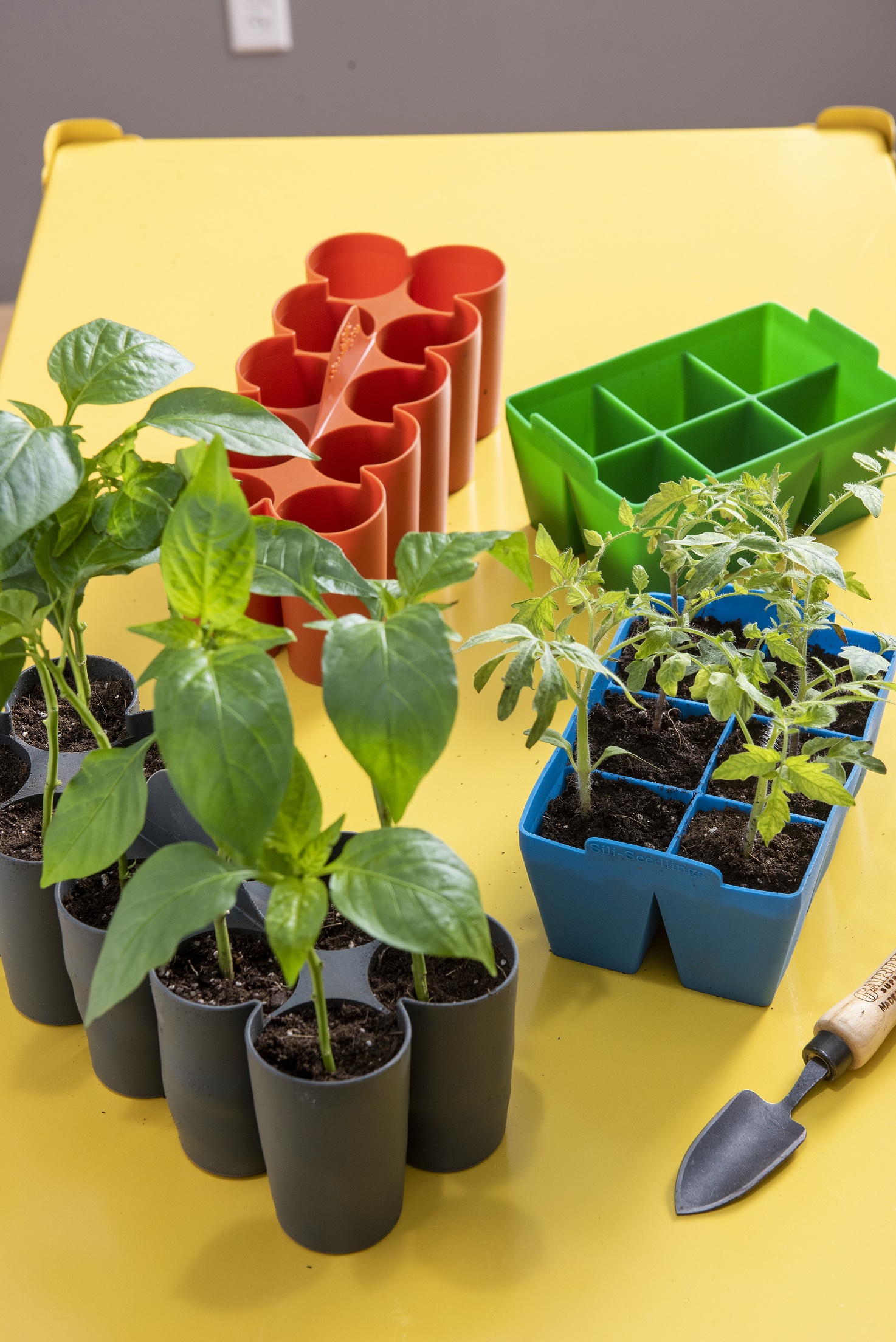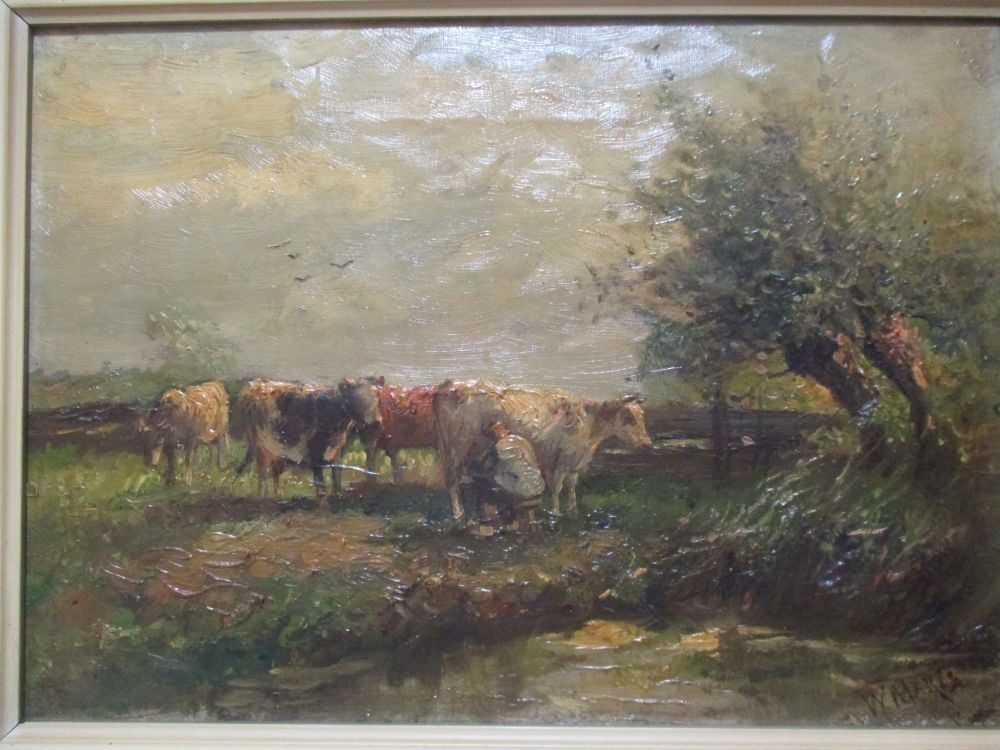
Gardening
Save Money and Boost Seed Starting Success

Seed-starting trays are reusable and make it easy to pop out young seedlings without damaging the plant's roots.
Photo courtesy of Gardener's Supply Company/gardeners.com
Boost your success, save money, and reduce plastic waste when starting plants from seeds this year. The options are many, so you are sure to find one that works for you.
Reuse plastic containers for starting plants from seeds. Disinfect the pots, flats, and cell packs before planting to avoid problems with damping off and other diseases. Soak the containers in a solution of one part bleach to nine parts water for ten minutes. Rinse with clear water. The pots are now clean and safe for starting seeds.
Biodegradable pots are another option. They have been around for many years, eliminating plastic and reducing transplant shock. Just plant the container along with the seedling when moving plants into the garden. You will find degradable pots made from a variety of materials.
Organic gardeners may want to use biodegradable pots made from sustainably grown wood fiber. These contain no glue or binders and are Organic Materials Review Institute (OMRI) listed. Cow pots are not currently OMRI listed but are made from odor-free composted cow manure and an alternative to plastic and peat. These are biodegradable and add nutrients and organic matter to the soil at planting.
Replace plastic seed starting cell packs with Honeycomb Paper pots. This 50-cell interlocking paper seed starter expands to fill a flat for easy planting. Roots expand through the open bottom and the cells easily separate, making it easy to move transplants into the garden. Once in the garden, the paper liners decompose.
Invest once and use the dishwasher-safe Sili-Seedlings Seeding Tray for years of seed starting. These durable and reusable seed trays are made of BPA-free food-grade silicone. The flexible cells allow you to easily pop seedlings out without pulling and tugging. After the transplants are removed, rinse off any remaining soil and place in the dishwasher so the trays are ready to use for future plantings.
Employ self-watering systems like Pop-Out Pots (gardeners.com). Move tomatoes and other transplants from seedling trays into these larger containers. The Pop-Out system, made from recycled polypropylene, uses wicks to move water from the reservoir to the plants as needed. Transplants are easily removed, and both the pots and wicks can be reused after hand washing in hot water.
Skip the pots and avoid transplant shock by using a soil blocker to create an endless supply of soil blocks for planting. Just moisten the potting mix, preferably one with a high percent of organic matter, to help the blocks hold their shape. Press the soil block maker into the moistened potting mix and rock back and forth to fill. Then place the blocks on a clean seed tray. Once planted, water from the bottom to avoid disturbing the soil block.
Look for ways to repurpose any remaining plastic containers. Use smaller containers to apply fertilizer, animal repellents or other granular material. Just scoop and shake to distribute the fertilizer over the garden bed.
Cover plants with empty pots when applying mulch to garden beds. Spread the mulch then lift the pot when the job is finished. Use them for double potting. Grow your plant in an old nursery pot and set it inside a decorative pot that lacks drainage.
Some nurseries are asking customers to return plastic containers and flats for their use. Other plant retailers have an area set aside for customers to return plastic pots for other customers to use or for recycling.
Sustainable gardening starts with products used for starting seeds. Continue the trend throughout the growing season by conserving water, repurposing leaves into mulch and recycling plant trimmings into valuable compost.
Melinda Myers has written more than 20 gardening books, including The Midwest Gardener's Handbook, 2nd Edition and Small Space Gardening. She hosts The Great Courses "How to Grow Anything" DVD series and the nationally-syndicated Melinda's Garden Moment TV & radio program. Myers is a columnist and contributing editor for Birds & Blooms magazine and was commissioned by Gardener's Supply for her expertise to write this article. Her web site is www.MelindaMyers.com.
Antiques
Should You Restore Your Antiques?

Most clients I meet are aware that they shouldn't try to clean, polish, shine or refinish antiques and collectibles. However, there are times when this typically taboo antique practice is actually acceptable, and even encouraged.
Despite a recent drop in antique furniture prices, period pieces from the early 1800s and prior, mid-century modern furniture and Mission oak are three types that still sell well. As you might expect, there are often issues with old furniture from the late 1700s or early 1880s. Many years of use along with the natural drying of the wood can cause cracks, breaks and splitting. With valuable pieces, it is best to hire a restoration company that specializes in restoring antiques. With other less valuable pieces, people often repair, restore or modify them to suit their taste. If you have furniture where a piece has broken off and you want to repair it, wood glue is preferable to Gorilla glue, especially if there's a chance you may resell it in the future.
When refinishing, it's best not to strip the piece so much that you've gone through all the layers and it looks like new wood. Unless you plan to paint it, that is. Once again, you should confirm that pieces aren't valuable before you make any of these changes.
Antique paintings are another item that often need restoration. If you like the painting and are keeping it for yourself, it may not matter to you whether it's valuable or not. But if you have a valuable painting by a listed artist, you may want to have it relined, a process where a second canvas is attached to a weak, old canvas. It is used when the painting is deteriorating or damaged. Some restorers prefer not to reline paintings though and instead try to only repair tears or other damage. Inpainting is another method used by restorers to paint the areas where paint is missing. If you are planning to sell your painting, my advice is to sell it as is and let the buyer do whatever restoration they'd like.
While some people suggest using various cleaning methods to clean coins, they are the one collectible I always suggest leaving as is. If you decide to sell them, the buyer will probably leave them alone, but can clean them with a method of their choosing if they want. It's also important to note that oils from skin can damage coins, so it's best to hold them by the edges. Gloves can also be used for added protection. Coins that haven't been cleaned will put more change in your pocket when you sell them.
We are still accepting consignments for our spring multi-estate auction. Registration is currently underway for my "Evaluating your antiques" class at Bay Path's adult evening school on Wednesday, March 23rd. More auctions and other events are also being planned. Please see our website www.centralmassauctions.com to join our email list or follow us on Facebook to keep up to date on auctions and other events.
Contact us at: Wayne Tuiskula Auctioneer/Appraiser Central Mass Auctions for Antique Auctions, Estate Sales and Appraisal Services www.centralmassauctions.com (508-612- 6111) info@centralmassauctions.com